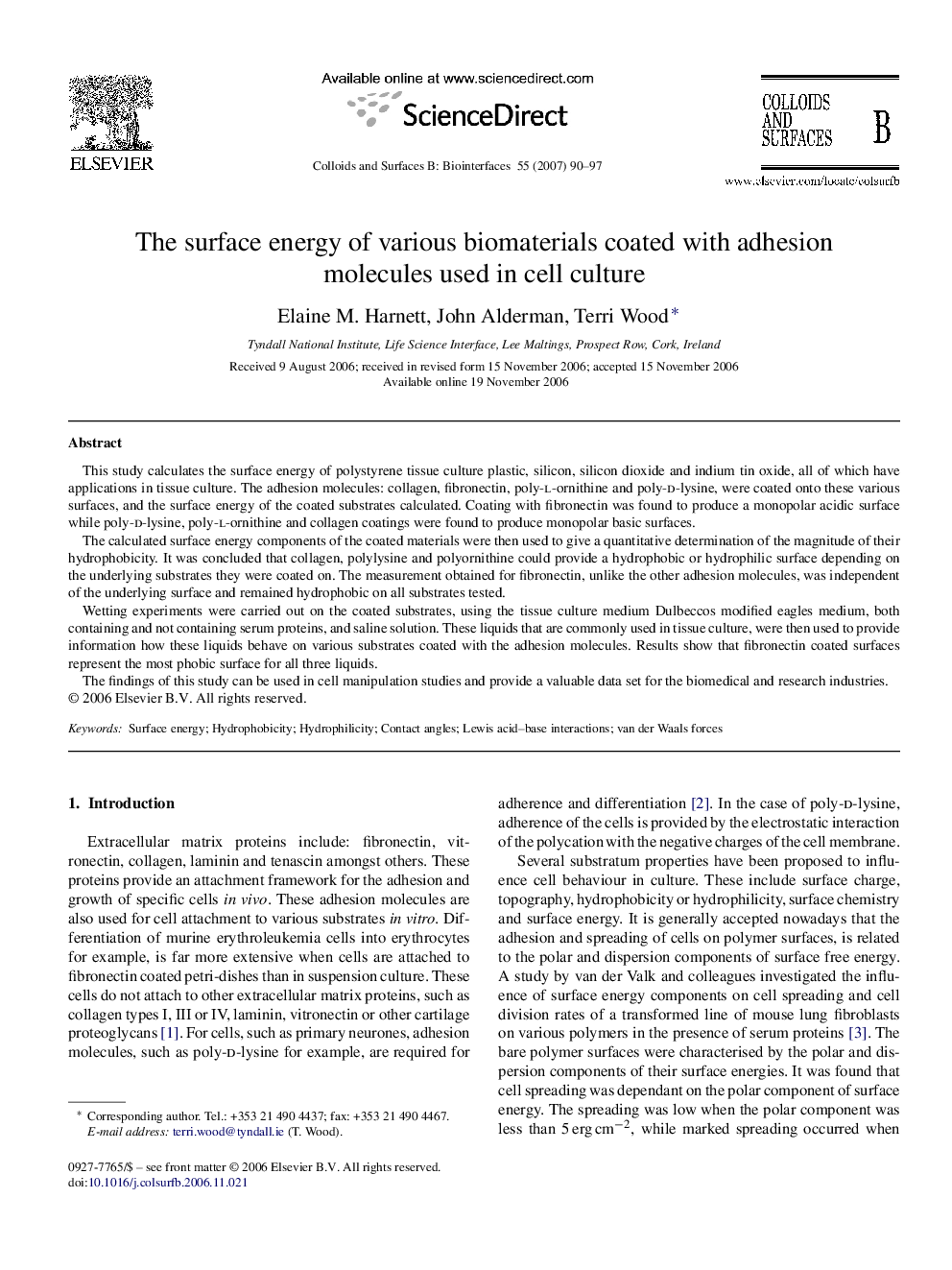| Article ID | Journal | Published Year | Pages | File Type |
|---|---|---|---|---|
| 602800 | Colloids and Surfaces B: Biointerfaces | 2007 | 8 Pages |
This study calculates the surface energy of polystyrene tissue culture plastic, silicon, silicon dioxide and indium tin oxide, all of which have applications in tissue culture. The adhesion molecules: collagen, fibronectin, poly-l-ornithine and poly-d-lysine, were coated onto these various surfaces, and the surface energy of the coated substrates calculated. Coating with fibronectin was found to produce a monopolar acidic surface while poly-d-lysine, poly-l-ornithine and collagen coatings were found to produce monopolar basic surfaces.The calculated surface energy components of the coated materials were then used to give a quantitative determination of the magnitude of their hydrophobicity. It was concluded that collagen, polylysine and polyornithine could provide a hydrophobic or hydrophilic surface depending on the underlying substrates they were coated on. The measurement obtained for fibronectin, unlike the other adhesion molecules, was independent of the underlying surface and remained hydrophobic on all substrates tested.Wetting experiments were carried out on the coated substrates, using the tissue culture medium Dulbeccos modified eagles medium, both containing and not containing serum proteins, and saline solution. These liquids that are commonly used in tissue culture, were then used to provide information how these liquids behave on various substrates coated with the adhesion molecules. Results show that fibronectin coated surfaces represent the most phobic surface for all three liquids.The findings of this study can be used in cell manipulation studies and provide a valuable data set for the biomedical and research industries.
